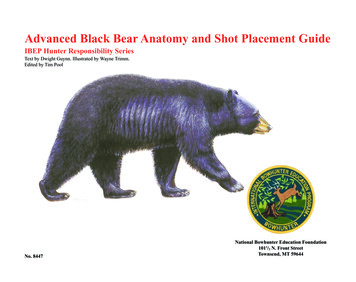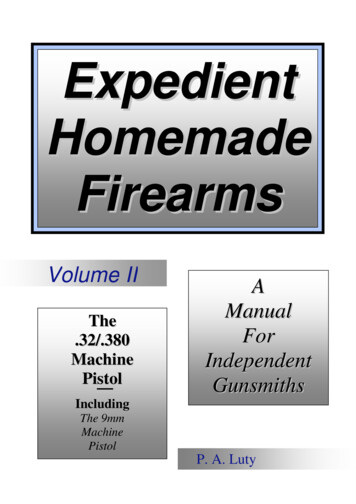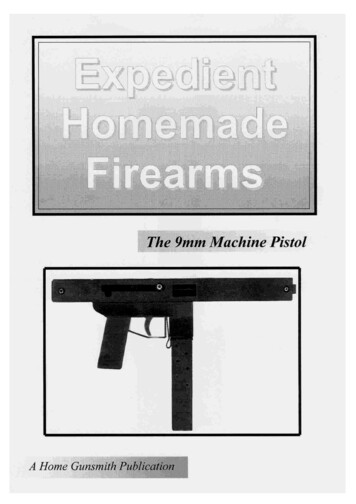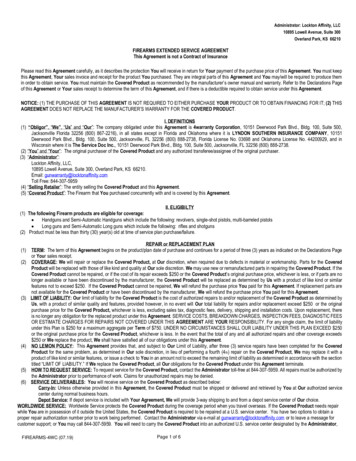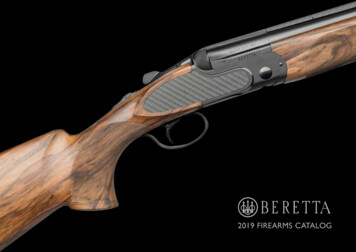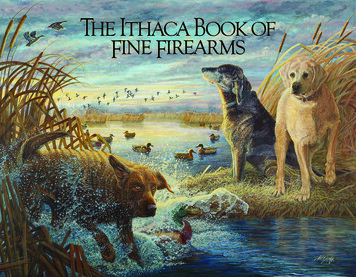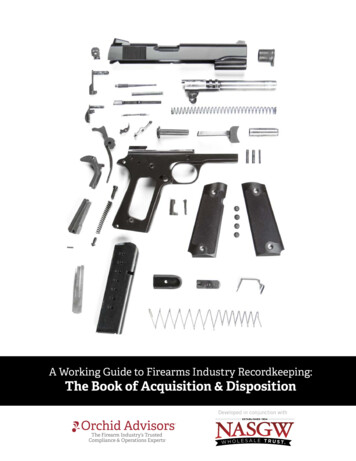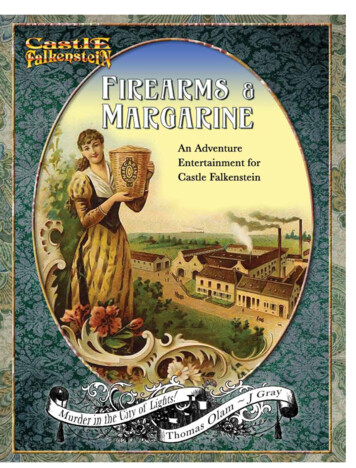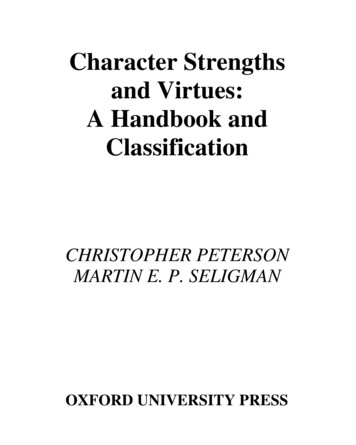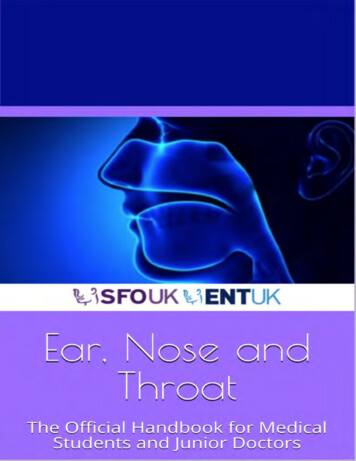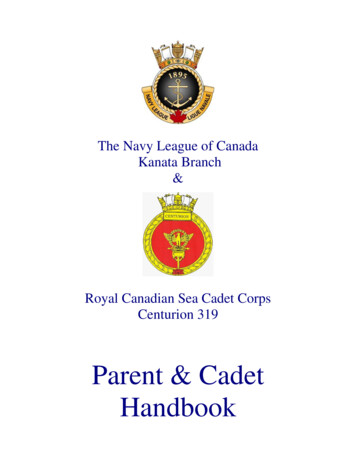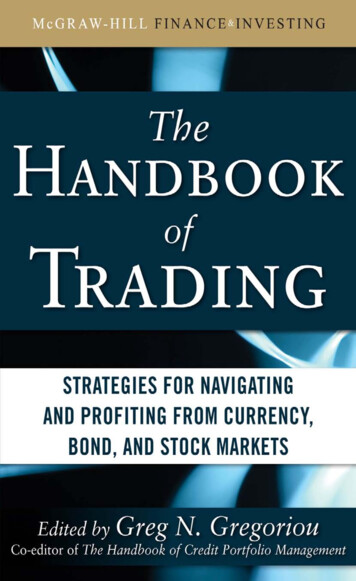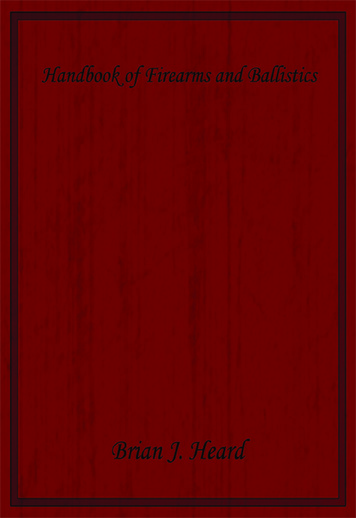
Transcription
Handbook of Firearms andBallisticsExamining and InterpretingForensic EvidenceSecond EditionBrian J. HeardA John Wiley & Sons, Ltd., Publication
Handbook of Firearms and BallisticsSecond Edition
Handbook of Firearms andBallisticsExamining and InterpretingForensic EvidenceSecond EditionBrian J. HeardA John Wiley & Sons, Ltd., Publication
This edition first published 2008, 2008 by John Wiley & Sons LtdWiley-Blackwell is an imprint of John Wiley & Sons, formed by the merger of Wiley’s global Scientific,Technical and Medical business with Blackwell Publishing.Registered office: John Wiley & Sons Ltd, The Atrium, Southern Gate, Chichester, West Sussex, PO198SQ, UKOther Editorial Offices:9600 Garsington Road, Oxford, OX4 2DQ, UK111 River Street, Hoboken, NJ 07030-5774, USAFor details of our global editorial offices, for customer services and for information about how to applyfor permission to reuse the copyright material in this book please see our website at www.wiley.com/wiley-blackwellThe right of the author to be identified as the author of this work has been asserted in accordance withthe Copyright, Designs and Patents Act 1988.All rights reserved. No part of this publication may be reproduced, stored in a retrieval system,or transmitted, in any form or by any means, electronic, mechanical, photocopying, recording orotherwise, except as permitted by the UK Copyright, Designs and Patents Act 1988, without the priorpermission of the publisher.Wiley also publishes its books in a variety of electronic formats. Some content that appears in print maynot be available in electronic books.Designations used by companies to distinguish their products are often claimed as trademarks. Allbrand names and product names used in this book are trade names, service marks, trademarks orregistered trademarks of their respective owners. The publisher is not associated with any productor vendor mentioned in this book. This publication is designed to provide accurate and authoritativeinformation in regard to the subject matter covered. It is sold on the understanding that the publisheris not engaged in rendering professional services. If professional advice or other expert assistance isrequired, the services of a competent professional should be sought.Library of Congress Cataloguing-in-Publication DataHeard, Brian J.Handbook of firearms and ballistics : examining and interpreting forensic evidence / by Brian J. Heard.p. cm.Includes index.ISBN 978-0-470-69460-21. Forensic ballistics. 2. Firearms. 3. Firearms–Identification. I. Title.HV8077.H43 2008363.25′62–dc 222008029101ISBN: 978-0-470-69460-2A catalogue record for this book is available from the British Library.Set in 10.5/12.5 Sabon by SNP Best-Set Typesetter Ltd, Hong Kong.Printed in Singapore by Markono Print Media Pte Ltd.First Impression 2008
ContentsDevelopments in Forensic ScienceixAcknowledgementsxiForeword1 Firearms1.11.21.3A Brief History of FirearmsWeapon Types and Their OperationProof MarksFurther Reading2 Ammunition2.12.22.32.42.52.6A Brief History of AmmunitionAmmunition ComponentsNon-toxic ShotA Brief History of PropellantsPriming Compounds and PrimersHeadstamp Markings on AmmunitionReference3 Ballistics3.13.23.33.4Internal, External and Terminal BallisticsInternal BallisticsExternal BallisticsTerminal BallisticsReferences4 Forensic Firearms Examination4.14.24.34.44.54.64.74.84.94.10A Brief History of Forensic Firearms IdentificationRifling Types and Their IdentificationFluted, Annular Ringed, Helical, Perforated and Oversized ChambersBasic Concepts of Striation MatchingBasic Methodology Used in Comparison MicroscopyMathematical Proof of Striation MatchesAccidental DischargeIdentification of Calibre from the Bullet Entry HoleRicochet AnalysisBullet Penetration and Trajectory through 02109124143145145154166170182186191197200204208
viCONTENTS5 Range of Firing Estimations and Bullet Hole Examinations5.15.25.35.45.5IntroductionThe Use of X-ray PhotographyRange of Firing Estimations for Pistols and RiflesChemical Tests for Range of Firing Estimations and Bullet Entry/ExitHole IdentificationRange of Firing Estimations for ShotgunsReferences6 Gunshot Residue tionFormation of Discharge ResidueDistribution of GSR ParticlesIdentification of GSR ParticlesThe Use of the SEM for GSR DetectionSample CollectionGSR RetentionConservation of GSR Particles on the HandsGSR Distribution on the HandsIdentification of Type of Ammunition, Country of Origin fromGSR Analysis6.11 Environmental Contaminants6.12 Sources of Elements Commonly Found in Lead-Based GSRs6.13 Extending the Recovery Period for GSRReferences7 Gun-Handling Tests7.17.27.3IntroductionMethodology for Ferrozine UseCase NotesReferences8 Restoration of Erased IntroductionMethods Used for Removal of Serial NumbersTheory behind Number RestorationNon-recoverable Methods of Number RemovalPractice of Number RestorationChemical Methods of RestorationReagents Used for Various MetalsElectrolytic Methods of RestorationReagents UsedUltrasonic Cavitation for RestorationMagnetic Particle Method for RestorationOther Methods of RestorationLaser-Etched Serial Numbers and Bar Codes and Their RestorationReferences9 Qualifying the Expert and Cross-Examination Questions9.19.2IntroductionGeneral Background 78279280280281283283284284285286288291291293
CONTENTS9.39.49.59.6Comparison MicroscopyGSRsFerrozine TestStandard of Review: ‘Daubert Trilogy’References10 Classification of Firearm-Related Death10.1 Multiple-Shot SuicidesReferencesvii29429730030030230530730911 Glossary311Appendix 1 Important dates in the History of Firearms from 1247333Appendix 2 GSR results for Chinese and USSR ammunition341Appendix 3 Primer content of some cartridge-operated nail guns345Appendix 4 Commercial and General Abbreviations forBullet Configurations347Appendix 5 Trade Names353Appendix 6 Gun Marks373Appendix 7 Powder Burn Rate377Appendix 8 Hearing Loss381Appendix 9 General Firearms Values Conversion Table389Index393
Developments in Forensic ScienceThe world of forensic science is changing at a very fast pace. This is in termsof the provision of forensic science services, the development of technologiesand knowledge and the interpretation of analytical and other data as it is appliedwithin forensic practice. Practicing forensic scientists are constantly striving todeliver the very best for the judicial process and as such need a reliable androbust knowledge base within their diverse disciplines. It is hoped that this bookseries will be a valuable resource for forensic science practitioners in the pursuitof such knowledge.The Forensic Science Society is the professional body for forensic practitionersin the United Kingdom. The Society was founded in 1959 and gained professional body status in 2006. The Society is committed to the development of theforensic sciences in all of its many facets and in particular to the delivery ofhighly professional and worthwhile publications within these disciplines throughventures such as this book series.Dr. Niamh Nic DaéidSeries editor.
AcknowledgementsIn writing the second edition of this book I have been assisted by more peoplethan I could begin to recount. Of these, a few deserve special mention.Quenten Ford not only for his invaluable help in formulating the outline ofthe original book, but also for his assistance in correcting the many typos thatcrept in.Barbara Scott for her help with the statistics and various formulae used inboth editions.Dr James Hamby, Evan Thompson and Chris Trumble for all their help andadvice in so many ways.And last, but not least Barbara, Edward and Emily, my wife and children, forall their support and understanding without which I could never have writtenthis book.
ForewordMedico-legal analysis forms, perhaps beyond all other branches, the most important work undertaken by the Analyst . . . its responsibility and importance lies inthe fact that, as the term itself suggests, questions of health, or even of life or deathare involved, and secondly, that the work performed will usually result in an actionat law, either civil or criminal . . . For these reasons the work demands the greatestskill and experience that can be brought to bear upon it the best instrumentalequipment that can be procured, the utmost patience, the most rigidly exact work,and, lastly, a sufficiency of time. . . .Stirring and eminently appropriate sentiments which would do justice to anymodern forensic laboratory administrator. The fact that these words were spokenby E.R. Dovey, Government Analyst of Hong Kong, in an address in 1917, isboth a remarkable testament to that scientist and a realization that even 80years ago, the profession he represented fully appreciated the vital role thatforensic science can play in the justice system.Incredible advances have been made in the sciences over the last few decades,and modern forensic laboratories are now staffed by teams of specialists, allexperts in their own particular fields. The days are past when a forensic scientistappeared in the witness box one day as an expert in blood grouping, the nextas a questioned document examiner and a third day as a suspicious fire investigator. Such ‘generalists’ do still present themselves from time to time, butinformed courts now afford them a level of credence bordering on ridicule, andrightly so!Increasing specialization and sophistication of scientific method has, however,widened the gulf of knowledge between the scientist, the lawyer and the jury.With a poor level of scientific literacy in the population at large, frequentcriticism of the capacity of scientists to express themselves intelligibly to a lay
xivFOREWORDaudience, and a predominance of barristers who are unable or unwilling to helpbridge the comprehension gap, that gulf is in danger of widening further.The Select Committee on Science and Technology (House of Lords 5th Report1992/3) has constructively, and to some, controversially, pointed the wayforward with recommendations for pre-trial conferences between counsel andown experts as a norm rather than an occasion; pre-trial review between expertsof both sides to define disagreements; encouragement for concluding statementsby experts before leaving the witness box; increasing use of visual aids; andfinally, for forensic science to feature more prominently in a lawyer’s training.To satisfy the last recommendation, however, there is a need for instructionaland informational textbooks on the specialist areas of the forensic scienceswritten with the practising criminal lawyer in mind, which bridge the gapbetween the handbooks for the expert and a ‘good read’ for the lay reader ofscientific bent. It is to be hoped that this book fills that purpose in the ballisticsfield.BRYCE N. DAILLY BSc, PhD, JPGovernment Chemist, Hong Kong, (retired)
1Firearms1.1A Brief History of Firearms1.1.1 Early hand cannonsThe earliest type of handgun was simply a small cannon of wrought iron orbronze, fitted to a frame or stock with metal bands or leather thongs. Theseweapons were loaded from the muzzle end of the barrel with powder, wad andball. A small hole at the breech end of the barrel, the touch hole, was providedwith a pan into which a priming charge of powder was placed. On igniting thispriming charge, either with a hot iron or lighted match, fire flashed through thetouch hole and into the main powder charge to discharge the weapon.These early weapons could have been little more than psychological deterrentsbeing clumsy, slow to fire and difficult to aim. In addition, rain or damp weatherhad an adverse effect on the priming charge making it impossible to ignite.Their first reported use is difficult to ascertain with any degree of certainty,but a number of instances are reported in Spain between 1247 and 1311. In therecords for the Belgian city of Ghent, there are confirmed sightings of the useof hand cannons in Germany in 1313. One of the earliest illustrations concerning the use of hand cannons appears in the fifteenth century fresco in the PalazzoPublico, Sienna, Italy.The first recorded use of the hand cannon as a cavalry weapon appeared in1449 in the manuscripts of Marianus Jacobus. This shows a mounted soldierwith such a weapon resting on a fork attached to the pommel of the saddle. Itis interesting to note that the use of the saddle pommel to either carry or aimHandbook of Firearms and Ballistics: Second Edition Brian J. Heard 2008 John Wiley & Sons, Ltd.
2CH1 FIREARMSFigure 1.1 Early hand cannon.the hand guns could be the origin of the word ‘pistol’, the early cavalry wordfor the pommel of the saddle being ‘pistallo’.Combinations of the battle axe and hand cannon were used in the sixteenthcentury, and a number of these can be found in the Tower of London. OneEnglish development of this consisted of a large mace, the head of which hada number of separate barrels. At the rear of the barrels, a concealed chambercontaining priming powder led to all the barrels. When the priming compoundwas ignited, all the barrels discharged at once.1.1.2 The matchlockThis was really the first major advance in pistols as it enabled the weapon tobe fired in one hand and also gave some opportunity to aim it as well.The construction of the matchlock was exactly the same as the hand cannonin that it was muzzle loaded and had a touch hole covered with a primingcharge. The only difference was that the match, a slow-burning piece of cordused to ignite the priming charge, was held in a curved hook screwed to theside of the frame. To fire the gun, the hook was merely pushed forward to drop
A BRIEF HISTORY OF FIREARMS3Figure 1.2 Matchlock (by courtesy of the Association of Firearms and Too
Wiley also publishes its books in a variety of electronic formats. Some content that appears in print may not be available in electronic books. Designations used by companies to distinguish their products are often claimed as trademarks. All brand names and product names used in this book are trade names, service marks, trademarks or
